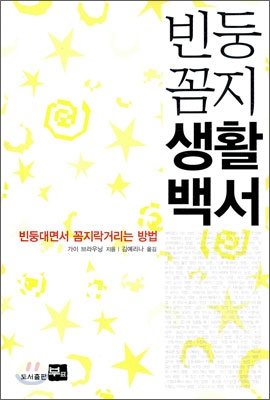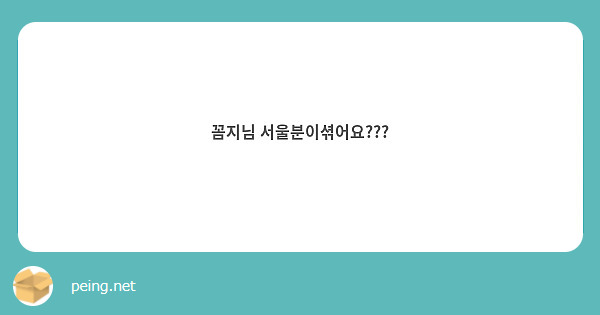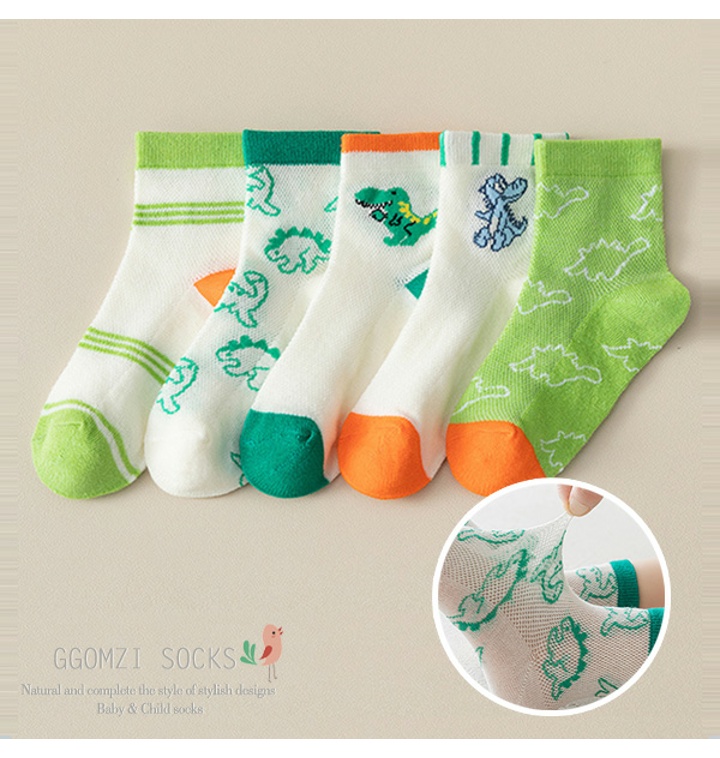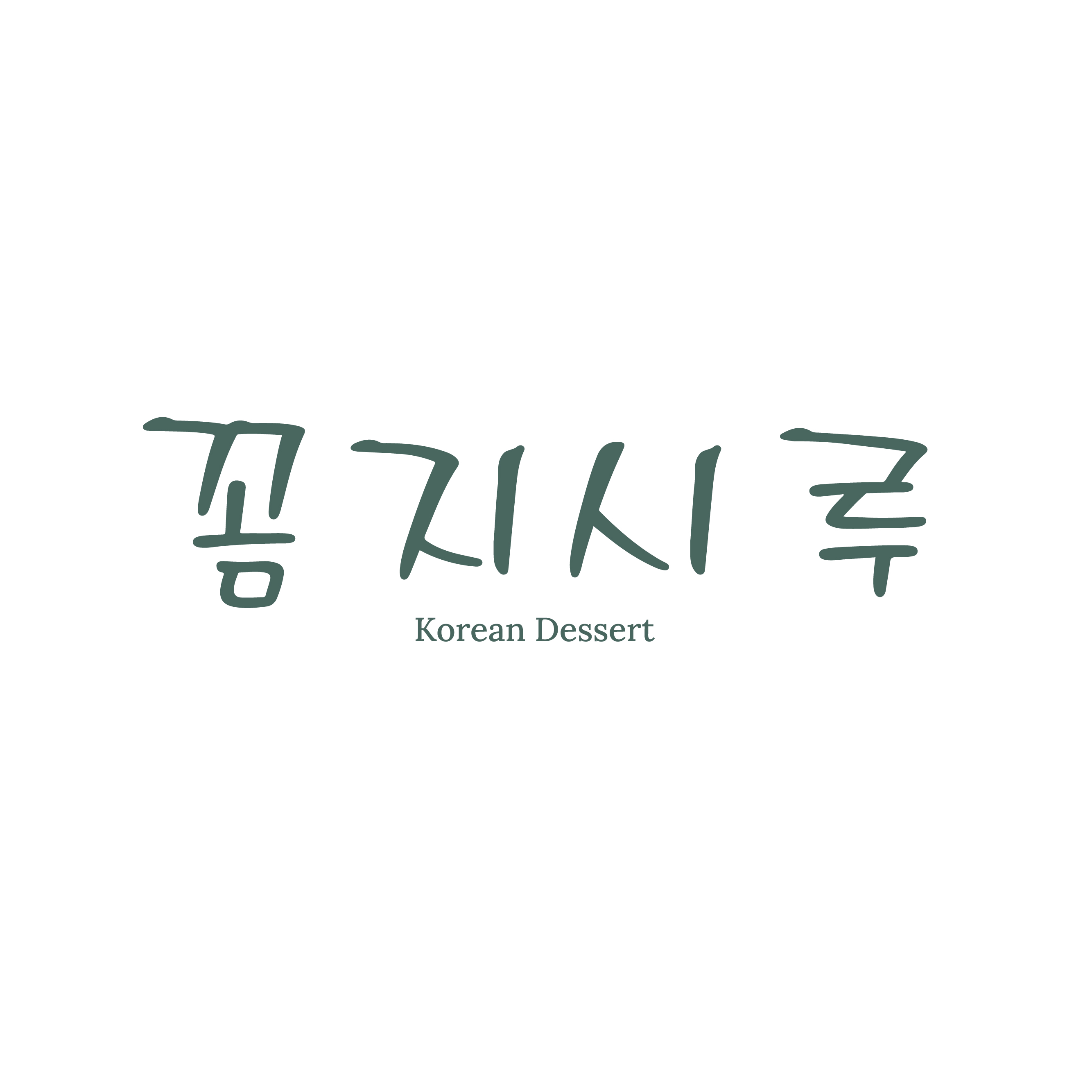꼼지
꼼지(꼼지랑)는 대한민국에서 주로 사용되는 한글 은어로, 사람들이 “꼼꼼하게 지지 않는다”라는 뜻으로 사용합니다. 이 용어는 작가 김영하의 소설 『꿈이 없는 남자들』에서 처음 사용되었습니다. 꼼지는 현대 사회에서 사람들이 대충 대충하거나 성의가 없는 모습을 비꼼적으로 비판하는 용어로 널리 사용됩니다.
꼼지의 기원과 역사
꼼지라는 용어의 기원은 작가 김영하의 소설 『꿈이 없는 남자들』에서 찾을 수 있습니다. 이 소설은 1978년에 출판되었으며, 그 속에서 김영하는 꼼지라는 단어를 처음으로 사용했습니다. 이후 소설을 통해 꼼지는 대중들 사이에서 널리 알려지고 사용되기 시작했습니다.
꼼지가 본래 의미한 것
꼼지는 원래 사람들이 무언가를 충분히 꼼꼼하게 처리하지 않는 상태를 빗대어 비판하는 의미를 가지고 있습니다. 이 용어는 대충하는 모습, 성의 없음, 태만함을 지칭하는데 사용됩니다. 예를 들어, 일을 대충대충 처리하거나 타인에게 불친절하게 대하는 모습을 꼼지라고 말할 수 있습니다.
꼼지의 현재 사용 및 의미
현재 꼼지라는 용어는 대한민국 사회에서 널리 사용되며, 비판적인 의미로 사용되는 경우가 많습니다. 사람들은 타인이 성의 없이 일하거나 대충 대하는 모습을 보고 “꼼지 같다”라고 이야기하곤 합니다. 또한 꼼지는 일상 대화나 온라인 커뮤니티에서도 자주 사용되는 표현으로, 사람들이 그들이 비판하거나 우스꽝스러워하는 모습을 표현하는 데 사용됩니다.
꼼지의 유래와 관련된 이야기들
꼼지라는 용어의 유래에는 몇 가지 이야기들이 있습니다. 일부는 소설 『꿈이 없는 남자들』에 나오는 인물인 “고도현”에서 유래했다고 합니다. 고도현은 꼼꼼한 성격을 가진 인물로 그의 성격이 문제가 되면서 “꼼지”란 용어가 생겨났다고 합니다. 또 다른 이야기에 따르면, 꼼지는 중국에서 유행하던 말인 “꼼간지가리”에서 변형되었다는 주장도 있습니다. 이 말은 대충 대는 사람을 비판하는 의미를 가지고 있었습니다.
꼼지 관련 문화와 특징
꼼지는 대한민국 사회에서 많은 사람들이 공감할 수 있는 용어로, 문화적인 현상으로 생각할 수 있습니다. 사회적으로 꼼지를 피하는 것은 중요하게 여겨지며, 꼼지로 인해 발생하는 문제들은 비판 대상으로 삼기도 합니다. 또한 꼼지와 관련된 멘트, 유행어, 비하적인 표현들이 개발되고 사용되는 경우도 있습니다.
꼼지의 사회적, 문화적 영향
꼼지는 대충하는 태도를 나타내는 은어로, 사람들이 더 나은 방향으로 변화하도록 유도하는 역할을 합니다. 사람들은 꼼지라는 단어를 사용함으로써 타인이나 자신의 행동을 비판하고, 성의 없는 모습을 발전시키기 위한 동기부여를 얻을 수 있습니다. 꼼지로 인해 일어나는 문제들은 사회적인 관심을 받고, 극복하기 위한 노력이 이루어지기도 합니다.
FAQs
1. 책 “Why” 시리즈 PDF는 어디에서 구할 수 있나요?
책 “Why” 시리즈 PDF는 온라인 서점이나 전자책 플랫폼에서 다운로드할 수 있습니다.
2. “Why 과학”과 “Why 역사”는 어떤 내용을 다루나요?
“Why 과학”은 과학에 관한 궁금한 질문과 그에 대한 답변을 다루는 책입니다. “Why 역사”는 역사적 사건과 인물에 대한 질문과 그에 대한 답변을 다루는 책입니다.
3. “애니 과학”은 무엇인가요?
“애니 과학”은 애니메이션 형식으로 과학 지식을 전달하는 프로그램이나 콘텐츠를 일컫는 용어입니다.
4. “Why 만화책”과 “Why 만화책 PDF”꼼지에 대해 알려주세요.
“Why 만화책”은 교육적인 내용을 만화 형식으로 담고 있는 책이며, “Why 만화책 PDF”는 해당 콘텐츠를 PDF 형식으로 다운로드할 수 있는 것을 의미합니다. 이러한 책들은 쉽게 읽을 수 있고 재미있게 배울 수 있는 점에서 인기를 얻고 있습니다.
꼼지는 사회적으로 중요한 문화적인 현상으로 대한민국 사회에서 널리 사용되고 있는 단어입니다. 이 용어는 사람들이 대충하는 태도를 비판하며, 더 나은 방향으로 발전할 수 있도록 동기부여를 제공합니다. 또한 “Why” 시리즈 PDF, 애니 과학 및 만화책과 같은 다양한 콘텐츠들도 꼼지와 관련하여 사회적 영향을 끼치고 있습니다.
사용자가 검색한 키워드: 꼼지 Why 책, 엄지, why시리즈 pdf, Why 과학, Why 역사, 애니 과학, Why 만화책, Why 만화책 pdf
Categories: Top 73 꼼지
퇴사 후 이갈고 서울 올라온 1인 사장의 갓생 vlogㅣ요리교실, 만화카페, 강연, 다이어리 꾸미기✨
여기에서 자세히 보기: experience-porthcawl.com
Why 책
Introduction
Books, or 책 (chaek) in Korean, have been an integral part of human civilization since time immemorial. They offer a treasure chest of knowledge, ideas, and experiences, serving as the foundation for learning, exploration, and cultural exchange. The Korean language, renowned for its unique alphabet, Hangul, provides its own rich literary heritage, making 책 in Korean a crucial source for individuals aiming to delve into the depths of Korean history, culture, and language proficiency. In this article, we will explore the significance of 책 in Korean and uncover compelling reasons why one should embrace these literary jewels.
The Power of Literature in Korean
1. Promoting Language Proficiency: Immersing oneself in 책 written in Korean is an excellent way to improve language skills. By encountering words in various contexts, readers enhance their vocabulary and gain a deeper understanding of grammar and sentence structure. Additionally, books offer a unique insight into colloquial expressions, cultural nuances, and idiomatic phrases, enabling learners to develop a more authentic and polished command of the Korean language.
2. Cultural Exploration: 책 in Korean provide a window into the rich and diverse world of Korean culture. From traditional folktales to contemporary novels, readers embark on a journey through time, witnessing the beliefs, values, and customs of the Korean people. By acquainting oneself with the cultural intricacies depicted in literature, individuals can foster a greater appreciation and understanding of Korean society, ultimately enabling them to forge meaningful connections with Korean friends, colleagues, or partners.
3. Academic Pursuits: Korean literature encompasses a vast array of genres, including historical accounts, sociological studies, and philosophical treatises. Whether one is engaged in academic research, seeking intellectual stimulation, or exploring a particular subject of interest, there is bound to be a 책 in Korean that caters to their needs. These books offer invaluable insights, shedding light on Korean perspectives and enhancing scholarly endeavors.
4. Entertainment and Escapism: Just like any other form of literature, 스토리북 (storybooks), novels, and thrillers in Korean provide a means of entertainment and escapism. Engaging narratives, captivating characters, and imaginative storytelling captivate the reader’s imagination, transporting them to different realms. Whether you’re seeking excitement, romance or fantastical adventures, the world of Korean literature has something to offer for every taste.
FAQs about 책 in Korean:
Q: Can non-Korean speakers benefit from reading 책 in Korean?
A: Absolutely! While it may initially seem daunting to read 책 in Korean for those unfamiliar with the language, it is undoubtedly a rewarding endeavor. There are various resources available such as Korean-English dictionaries and language learning apps that can aid non-Korean speakers in their reading journey. Additionally, some books have bilingual editions or translations, enabling readers to compare the original Korean text with their native language.
Q: Where can one find 책 in Korean?
A: 책 in Korean can be found in numerous places. Local bookstores, both physical and online, often have a dedicated section for Korean literature. Public libraries and university libraries also tend to carry a selection of Korean books. Furthermore, with the advent of digital platforms, e-books and 한국어 전자책 (Korean e-books) are readily available for download. Online platforms such as Gmarket and Kyobo Books provide an extensive collection of books in Korean, catering to readers worldwide.
Q: Are there recommended 책 in Korean for beginners?
A: Yes, there are several 책 in Korean suitable for beginners. “Graded Readers” provide simplified versions of popular and classic Korean literature, making them more accessible to learners. Another option is reading translated works of Korean writers, such as “The Vegetarian” by Han Kang or “Please Look After Mom” by Kyung-sook Shin. These translations retain the essence of Korean culture while offering a smoother reading experience for beginners.
Q: Are there any Korean authors famous for their contributions to literature?
A: Absolutely! Korean literature boasts a rich heritage of influential authors. Some acclaimed figures include Yi Mun-yol, Park Kyung-ni, and Hwang Sok-yong. These literary giants have made significant contributions to Korean literature, shaping its identity and representation on the global stage.
Conclusion
책 in Korean have the power to educate, fascinate, and inspire readers around the world. From language learners to avid readers in search of new horizons, embracing 책 in Korean opens doors to a plethora of knowledge and cultural insights. By delving into the vast world of Korean literature, individuals embark on a life-changing literary journey, leading to a deeper understanding of the Korean language, culture, and the human experience at large. So why wait? Dive into the enchanting realm of 책 in Korean and explore the possibilities that await!
엄지
Anatomy of the Thumb:
The thumb is the first digit of the hand and consists of three phalanges. Unlike the other fingers, it has only two joints, known as the interphalangeal joint and the metacarpophalangeal joint. This unique structure allows for greater flexibility and enhanced gripping abilities. The opposing thumb is one of the key evolutionary developments that sets humans apart from other species. Our ability to oppose the thumb to the other fingers allows us to perform intricate tasks and have a precise grip.
Cultural Significance:
In Korean culture, the thumb holds various symbolic meanings. One of the most well-known associations is its connection to relationships and marriage. The term “엄지척” (um-ji-check) refers to the act of interlocking thumbs. It is seen as a gesture of commitment, trust, and intimacy between couples. The significance of this gesture is rooted in the belief that the thumb holds a special bond with the heart, making it a symbol of love and connection.
In addition, the thumb also has superstitions surrounding it. For example, if you accidentally hit your thumb with a hammer, it is believed to bring bad luck. To counteract the negative effects, people often blow on their thumb or bite it lightly. These actions are thought to dispel the misfortune and prevent further harm.
The Thumb in Everyday Life:
The thumb plays an essential role in several everyday activities. One of its primary functions is precision grip. This grip enables individuals to hold and manipulate small objects with great control, such as a pen, chopsticks, or a paintbrush. The thumb’s mobility and strength make intricate hand movements possible, allowing us to engage in activities like writing, drawing, and playing musical instruments.
Furthermore, the thumb is vital for maintaining balance and stability. When walking or running, the thumb helps keep our posture upright and prevents us from falling. Both in daily routines and sports, the thumb actively contributes to our equilibrium and body control.
Frequently Asked Questions:
Q: Can the thumb be easily injured?
A: Yes, the thumb is vulnerable to various injuries due to its prominent position and active role in daily activities. Common thumb injuries include fractures, sprains, and cuts. It is crucial to seek medical attention and give proper care to any thumb injuries to ensure a quick and full recovery.
Q: Are there any exercises to strengthen the thumb?
A: Yes, there are exercises that can help strengthen the thumb muscles. Simple activities like squeezing a stress ball or gripping a rubber band can improve thumb flexibility and strength. Hand grippers and pinch grips are also excellent tools specifically designed to target thumb strength.
Q: Can the thumb’s flexibility decrease with age?
A: As we age, joint mobility in the thumb, like in other parts of the body, may decrease. Conditions such as arthritis can affect the thumb’s flexibility and cause discomfort or pain. Regular hand exercises, along with a healthy lifestyle, can help maintain thumb flexibility and mitigate any age-related changes.
Q: What happens if the thumb is impaired or lost?
A: Impairment or loss of the thumb can significantly affect a person’s daily life and independence. Without the thumb’s oppositional movement, tasks that once seemed effortless become challenging. Fortunately, advancements in technology have provided solutions such as prosthetic thumbs that assist individuals in regaining some functionality.
Q: Are there any cultural beliefs associated with the thumb in Korea?
A: Yes, aside from the romantic significance mentioned earlier, Koreans hold an intriguing belief regarding the length of the thumb. It is said that a long thumb is an indication of a prosperous life while a short thumb suggests potential financial struggles. While these beliefs are purely cultural and not based on scientific evidence, they have been passed down through generations in Korean folklore.
In conclusion, the thumb, or 엄지, is not merely a digit on our hands but a fundamental component of our daily lives. From its anatomical uniqueness to its cultural significance in relationships, the thumb holds a special place in Korean culture. Remembering its essential functions in gripping, stability, and balance, we can appreciate how the thumb contributes to our ability to interact with the world around us.
주제와 관련된 이미지 꼼지

꼼지 주제와 관련된 이미지 28개를 찾았습니다.

![오늘의앱]내 아이가 만든 인형극 '꼼지쪼물 인형놀이' - 머니투데이 오늘의앱]내 아이가 만든 인형극 '꼼지쪼물 인형놀이' - 머니투데이](https://thumb.mt.co.kr/06/2011/11/2011112411274773397_2.jpg/dims/optimize/)









![꼼지] H리치워머양말(1족) 유아동양말 100742 꼼지] H리치워머양말(1족) 유아동양말 100742](https://static.coupangcdn.com/image/vendor_inventory/images/2018/09/17/14/7/a2ce8c4f-ef06-4374-aa50-525e6adf6a18.jpg)







![꼼지]GM포인라인5족세트 주니어 스포츠양말 3~7호_P089951942 꼼지]Gm포인라인5족세트 주니어 스포츠양말 3~7호_P089951942](https://img.shoppingntmall.com/goods/269/10484269_h.jpg)

![꼼지] 백설이 인형 만들기 D.I.Y - HOTTRACKS 꼼지] 백설이 인형 만들기 D.I.Y - Hottracks](https://image.kyobobook.co.kr/newimages/giftshop_new/goods/400/1773/hot1499063226391.jpg)
![매거진꼼지 [우리는 매일같이] 작가 인터뷰 - YouTube 매거진꼼지 [우리는 매일같이] 작가 인터뷰 - Youtube](https://i.ytimg.com/vi/cA4crSIQfhw/maxresdefault.jpg)
![꼼지] D무발 베이직타이즈+양말세트/유아/여아/어린이/니삭스/타이즈/무지타이즈 | 백화점을 클릭하다. AK 몰 꼼지] D무발 베이직타이즈+양말세트/유아/여아/어린이/니삭스/타이즈/무지타이즈 | 백화점을 클릭하다. Ak 몰](https://photo.akmall.com/image1/goods/90/33/45/41/90334541_M_1500.jpg)
Article link: 꼼지.
주제에 대해 자세히 알아보기 꼼지.
더보기: https://experience-porthcawl.com/blog/